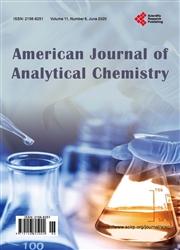Is Titration as Accurate as HPLC for Determination of Vitamin C in Supplements? —Titration versus HPLC for Vitamin C Analysis
引用次数: 7
Abstract
Herein, the iodometric titration and HPLC-RP methods were compared for the determination of vitamin C in vitamin and mineral supplements. The methods were validated in terms of linearity, limits of detection (LOD), limits of quantification (LOQ), precision, and recovery by using vitamin standards and a reference material SRM 3280 (multivitamin/multimineral tablets) obtained from the National Institute of Standards and Technology (NIST). A total of 22 samples of vitamin supplements, randomly acquired in local markets of Sao Paulo (Brazil) were evaluated for content of vitamin C by these two methodologies. The precision expressed as RSD was lower than 5% for both methods. LOD was 3.6 μg/mL for HPLC and 1.0 mg for titration, while LOQ were 12.0 μg/mL and 3.0 mg for HPLC and titration, respectively. Percent recoveries (%) of spiked samples ranged from 98.7 to 100.5 for HPLC and from 98 to 104 for titration. The contents of vitamin C in SRM 3280 (Certified value = 42.2 ± 3.7 mg/g) were 40.2 and 42.1 mg/g when determined by HPLC and titration respectively. Statistically, there was no difference in the analysed vitamin C content for half of the samples, irrespective of the method applied. HPLC was more sensitive, but the titrimetric method was faster and consumed less reagent. Although both methods were accurate in determining the vitamin C content in SRM 3280, the matrix constituents of some vitamin supplements may have interfered with the analysis.滴定法与高效液相色谱法测定补充剂中的维生素C一样准确吗?-滴定法与高效液相色谱法测定维生素C
本文比较了碘量滴定法和HPLC-RP法测定维生素和矿物质补充剂中维生素C的含量。通过使用维生素标准品和从美国国家标准与技术研究所(NIST)获得的参考物质SRM 3280(多种维生素/多种矿物质片),在线性、检测限(LOD)、定量限(LOQ)、精密度和回收率方面对这些方法进行了验证。通过这两种方法对在圣保罗(巴西)当地市场随机获得的22份维生素补充剂样本的维生素C含量进行了评估。两种方法的精密度均低于5%。高效液相色谱法和滴定法的LOD分别为3.6μg/mL和1.0 mg,而高效液相色谱仪和滴定法分别为12.0μg/mL、3.0 mg。对于HPLC,加标样品的回收率(%)为98.7至100.5,对于滴定,回收率为98至104。用高效液相色谱法和滴定法测定SRM3280中维生素C的含量(认证值=42.2±3.7mg/g)分别为40.2和42.1mg/g。从统计数据来看,无论采用何种方法,一半样本的维生素C含量分析均无差异。高效液相色谱法更灵敏,但滴定法速度更快,试剂消耗更少。尽管这两种方法在测定SRM 3280中的维生素C含量时都是准确的,但一些维生素补充剂的基质成分可能干扰了分析。
本文章由计算机程序翻译,如有差异,请以英文原文为准。
求助全文
约1分钟内获得全文
求助全文

 求助内容:
求助内容: 应助结果提醒方式:
应助结果提醒方式:


